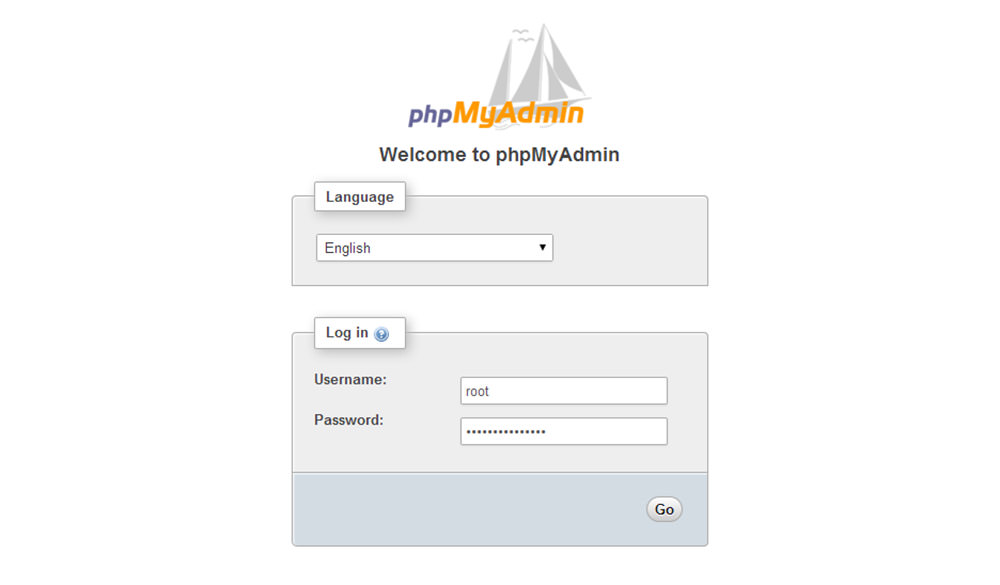
SSL and TLS are two different types of encryption protocols. These two types have different encryption algorithms. Although both protocols are very useful, there are important differences. Let's take a closer look at some of their main differences.
Authentication
TLS (SSL) and SSL (TLS) use client authentication in order to restrict access to authenticated clients. This authentication is used to prevent attacks by external sources. It is accepted and widely used. However, client certificates must be installed on client computers and applications. This can be time-consuming and not very intuitive for end users.
The two protocols employ different ciphers to encrypt data. TLS uses a stronger and more advanced set of cryptohers and has complete forward secrecy. There are also different ways to communicate error conditions and warning messages. TLS uses encrypted alert message encryption, which is not accessible to anyone but the intended recipients.

Encryption
SSL and TLS differ primarily in the way they protect data. SSL uses asymmetric cryptography, which is a type algorithm to protect data transmitted over a network. This type of encryption protects data with a private key and shared secret. These details are exchanged between clients and servers before any data is sent. This makes this encryption secure and reliable.
TLS 1.0 has many vulnerabilities, including one called BEAST. The BEAST exploit exploits a known vulnerability in TLS 1.0, cipher block chaining. This vulnerability allows an attacker to force a server to use weaker 512-bit encryption keys.
Certificates
TLS and SSL certificates can seem confusing, especially if it is your first time using internet protocols. TLS certificates offer the same level encryption as SSL, but TLS is a more recent security protocol. Learn more about which protocol is best for your site.
SSL and TLS certificates can be digital certificates issued by certificate authorities. A client receives a public cryptographic secret key that is necessary to establish secure connections. The certificate authenticates who the certificate authority is as the owner.

Implementation
SSL and TLs are security protocols that provide encryption of internet traffic. These protocols are based in cryptographic key, which are calculated over a Protocol message. They are also used for data integrity validation. Session keys are used to protect the connection by both client and server. A secure connection is established when both parties agree to exchange encrypted data.
TLS, SSL, and OpenSSL are commonly implemented in free and open-source projects. OpenSSL or CyaSSL are common implementations. These libraries can be embedded into most popular web browsers. These libraries are also used by many popular software projects to support SSL and TLs. These libraries support SSL or TLS over TCP which is a reliable, datagram-oriented transport protocol.
FAQ
Web development: Is it hard?
Web development can be difficult, but there are many online resources to help you get started.
It is as easy as finding the right tools for you and following them step by step.
YouTube and other platforms provide many tutorials. You can also download free software online like Sublime Text or Notepad++.
Books can also be found in libraries and bookstores. Here are some of the most popular:
O'Reilly Media's Head First HTML & HTML
O'Reilly Media's Head First PHP and MySQL 5th Ed.
Packt Publishing: "PHP Programming to Absolute Beginners"
I hope this article was helpful.
What is a responsive design web design?
Responsive Web Design, also known as RWD, is a way of designing websites so that content displays on all devices. This includes desktop computers, tablets (tablets), smartphones, etc. This allows visitors to view the website on one device and access other features like buttons, navigation menus, etc. RWD's goal is to ensure that users view the exact same version of a website on every screen size.
If you are building a website to sell products primarily via eCommerce, then you want to make sure that customers can purchase items from your store even if they view it on their smartphones.
A responsive site will adapt to the device used to view it. So, viewing the site on your laptop will look like a standard desktop website. But, the page will appear differently if you view it on your phone.
This allows you to create one website that works on all devices.
How to design a website?
First, you need to know what your customers want from your site. What do your customers want from you when they visit your website?
What problems might they have if they don't find what they're looking for on your site?
Once you know this, you must figure out how to solve those problems. It is also important to ensure your site looks great. It should be easy for users to navigate.
You should have a well-designed website. You should ensure that your site loads quickly. If it takes too long, people may not be able to stay as long. They will go elsewhere.
When you are building an eCommerce site, it is important to consider where all your products are located. Are they all in the same place? Or are they scattered around your site?
It is important to decide whether you will sell only one product or multiple products at once. Are you looking for a single product to sell or multiple products?
These questions will help you decide if you want to build your website.
Now it is time for you to concentrate on the technical aspect of things. How will your website work? Will it be fast enough? Can people get to it quickly from their computers?
Will they be able buy anything without having pay an extra fee? Do they need to register in order to buy anything?
These are crucial questions you should be asking yourself. These questions will help you to make the right decisions and move forward.
Statistics
- Studies show that 77% of satisfied customers will recommend your business or service to a friend after having a positive experience. (wix.com)
- When choosing your website color scheme, a general rule is to limit yourself to three shades: one primary color (60% of the mix), one secondary color (30%), and one accent color (10%). (wix.com)
- It's estimated that chatbots could reduce this by 30%. Gone are the days when chatbots were mere gimmicks – now, they're becoming ever more essential to customer-facing services. (websitebuilderexpert.com)
- In fact, according to Color Matters, a signature color can boost brand recognition by 80%. There's a lot of psychology behind people's perception of color, so it's important to understand how it's used with your industry. (websitebuilderexpert.com)
- At this point, it's important to note that just because a web trend is current, it doesn't mean it's necessarily right for you.48% of people cite design as the most important factor of a website, (websitebuilderexpert.com)
External Links
How To
How can I become a UI designer?
There are two ways to become a UI designer:
-
You can also go to school and get a degree as UI Design.
-
You can start freelance.
For you to be able to finish school, you must attend college or university. This includes art, computer science, business, marketing, psychology, etc.
Classes can be taken at either state or community universities. Some schools offer no tuition, while some charge tuition.
After graduating, you'll need to find employment. If you plan to work for your own business, you need to establish a client base. It is essential to establish a professional network so other professionals know you exist.
Internships are also available at web application development companies. Many companies hire interns in order to gain valuable experience before they hire full-time employees.
A portfolio will help you get more work once you have established it. You should have work samples and information about the projects you worked on in your portfolio.
It's a great idea to email your portfolio to potential employers.
Freelancers need to promote themselves. You can list your services on job boards such Assure, Guru, Freelance, Guru and Upwork.
Freelancers receive assignments often from recruiters who post open positions online. These recruiters find qualified candidates for specific jobs.
These recruiters typically provide the candidate with a project brief outlining the position's requirements.
While freelancers aren't required to sign contracts for a long time, they can still be paid. You should negotiate an upfront payment if your goal is to move forward.
Designers prefer working directly with clients over working through agencies. While this may seem ideal, many people lack the necessary skills.
Agency workers are often well-versed in the industry they work in. They have access the right training and resources to ensure they produce high-quality results.
In addition to these benefits, agency workers usually receive a higher hourly rate.
You won't be able to get in touch with your employer directly if you work with an agency.
You must be creative, self-motivated and flexible to succeed as a UI Designer.
Also, you must have excellent communication skills both verbally and in writing.
UI designers create user interfaces and visual elements for websites.
They are also responsible in ensuring that the site meets all users' requirements.
This requires understanding what information visitors want and how the website should function.
Wireframes can also be created by UI developers using a variety o tools. They use wireframing to help them visualize the layout of a webpage before they start designing.
It is easy to create your own wireframes using the online templates.
Some designers are solely focused on UI design while others blend UI design and graphic design.
Photoshop is a popular software used by graphic designers for editing images.
They then use Adobe InDesign to lay out pages and layouts.
Photographers capture images using digital cameras or DSLRs.
The photos are then uploaded into a photo editing program. Here they can add captions, filters, or other effects.
After the shoot, the photographer saves and archives the image in a format compatible with website.
It is important to take into consideration all aspects of the design process when building a website.
This includes research and planning, wireframing, prototyping testing, coding, content creation and publishing.
Research - Before you start a new project, it's important to do thorough research.
Planning – Once you've done your research, you will want to start developing a plan.
Wireframing: A wireframe is a sketch of a website or application.
Prototyping: Prototypes can help to ensure that the final product meets the initial vision.
Testing - Multiple rounds of testing should be done on the prototype to make sure it works properly.
Coding - Coding refers to the process of writing computer code.
Content Creation - This includes everything from managing social media accounts to writing copy.
Publishing is the act of uploading files and making sure that the site can be accessed.
You will learn about various projects as a freelance UX/UI designer.
Some companies require only wire frames, others require complete prototypes.
You might be required to do certain tasks, depending on what type of project it is.
For instance, if your job is to create wireframes you might have to make several over the course of time.
You may need to develop a functional version of the site if you are hired to build a prototype.
It doesn't really matter what project you're working on, good interpersonal skills are vital.
Referring freelancers is the best way to get work. It's important to establish good relationships with potential employers.
You must also be able communicate clearly both verbally as well as in writing.
Portfolios are an essential part of any freelancer’s toolbox.
It is a showcase of your work and a demonstration of your ability produce high-quality outputs.
This is possible by creating an online portfolio.
It is a good idea to look for websites that are similar to yours to get you started.
Next, search these sites to discover which site offers what services.
Once you identify what you think are the best practices, go ahead and adopt them.
It is also a good idea to include links in your resume to your portfolio.